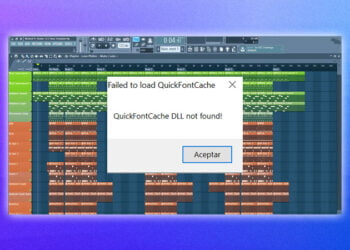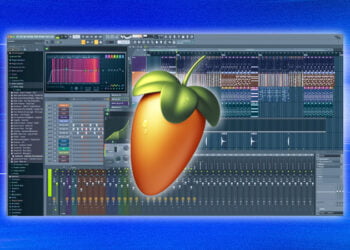When it comes to digital audio workstations, there are two major contenders: FL Studio and Ableton.
Both provide comprehensive digital audio workstations, but what makes one better than the other?
This blog post will explore the differences between FL Studio and Ableton to help you determine which one is best suited for your needs.
FL Studio, formerly known as Fruity Loops, is a digital audio workstation with a history going back to 1997.
It’s simple interface and low cost makes it popular among a wide range of users, from hobbyists to professional producers.
Ableton, on the other hand, is a much newer platform, having been released in 2001.
It provides a more advanced set of features and tools, but requires a steeper learning curve.
Both platforms have their own strengths and weaknesses, and the best one for you will depend on your individual needs.
In this blog post, we’ll explore the differences between the two platforms, looking.
FL Studio’s Music Production Environment
FL Studio is a popular music production environment for both professionals and amateurs.
It comes with a wide range of features, such as an integrated piano roll editor and a powerful step sequencer.
It also offers plugins for recording, mastering, and mixing, as well as a variety of tools for creating unique sounds.
FL Studio also includes a built-in library of over 3000 virtual instruments and sound samples.
Additionally, its user-friendly interface allows users to quickly create their own unique sound and start producing music.
FL Studio is also known for its performance and high quality output, making it a popular choice for many music producers.
Ableton’s Live Performance Environment
Ableton Live is a performance environment that allows you to mix and manipulate audio, video, and MIDI in real time.
Live is widely used by DJs and producers in live performances because it is well-suited to improvisation and experimentation.
Unlike FL Studio, Live has a timeline-based interface which allows you to quickly arrange clips and scenes to create a performance.
Live’s MIDI functions are particularly notable, as they allow you to easily control the behavior of plug-ins, instruments, and effects.
Furthermore, Live’s auto-warp feature allows you to quantize your music in real-time, which is useful for live performances.
No products found.
FL Studio’s Built-In Plugins
FL Studio has a wide selection of built-in plugins that will suit any style of music production.
From software synths and samplers like Sytrus, Harmor, and Fruity Loops to effects plugins like Maximus and Gross Beat, FL Studio has it all.
Many of these plugins have extremely creative features that can help you create unique sounds.
For instance, Sytrus has a built-in FM Matrix that allows you to create complex FM tones with ease.
In addition, Gross Beat has features such as gating, compression, and flanging that give you a huge range of sound manipulation possibilities.
Ableton’s Extensive Library of Effects
It’s clear that Ableton has a strong suite of features and tools, but one of the things that sets it apart from FL Studio is its extensive library of effects.
Ableton’s collection of effects includes everything from reverb, chorus, and flange to compression, EQ, and more.
Each effect can be adjusted with precision and even automated with ease.
This means that Ableton is a great choice for those who want to get creative with their sound and create unique soundscapes.
No products found.
FL Studio’s Unique Interface and Workflow
One of the key differences between FL Studio and Ableton is in their interface and workflow.
FL Studio has a unique way of laying out its interface, with a customizable browser window on the left side of the screen that allows you to quickly search for your sounds and samples.
The workflow is also unique, with an easy-to-use timeline that allows you to arrange your audio and MIDI components in a visual way.
It also has an efficient pattern-based sequencer, which lets you create loops quickly and easily.
All of these features make FL Studio ideal for those who enjoy creating music quickly and intuitively.
Ableton’s Comprehensive MIDI Features
One of the main reasons why Ableton is a great choice for producing music is its comprehensive MIDI features.
The Ableton Live Suite comes with a wide range of features that allow you to manipulate and control MIDI data, including MIDI mapping, MIDI editing, and MIDI recording.
With MIDI mapping, you can assign different parameters of your music to different controllers, allowing you to create complex sounds and manipulate them on the fly.
Ableton also comes with a robust MIDI editing feature, which allows you to edit existing MIDI files or create new ones.
Finally, Ableton’s powerful MIDI recording feature allows you to record your performances and edit them afterwards.
All in all, Ableton’s comprehensive MIDI features make it an excellent choice for both novice and experienced producers.
FL Studio’s Comprehensive Mixing Options
FL Studio’s comprehensive mixing options are another big plus for producers.
This DAW gives you complete control over each track, allowing you to apply a range of effects, filters, and tools to achieve a truly unique sound.
You can also record and process audio from both external and internal sources, giving you the freedom to craft your own sound from scratch.
FL Studio’s intuitive and powerful mixing engine makes it easy to mix multiple tracks together, allowing you to create full, professional-sounding mixes with ease.
No products found.
Ableton’s Compatibility with iOS and Android Devices
One of the biggest advantages of Ableton as compared to FL Studio is its compatibility with both iOS and Android devices.
While FL Studio is PC and Mac-only, Ableton can be used on any device, making it accessible and convenient for musicians on the go.
This makes it easier to record, mix, and edit music while on the move, giving musicians the ability to stay creative and productive anywhere.
Additionally, Ableton also offers a free companion app for iOS and Android, Ableton Live Controller, which enables users to control the software with their mobile devices.
Conclusion
Ultimately, each DAW has its own set of advantages and drawbacks.
FL Studio is great for beginners as its user-friendly interface and wide selection of audio tools make it easy to learn.
On the other hand, Ableton is great for professionals due to its advanced features and workflow features.
Both DAWs are excellent choices and it ultimately comes down to personal preference.
No matter which one you choose, you’re sure to have plenty of fun making music.
























